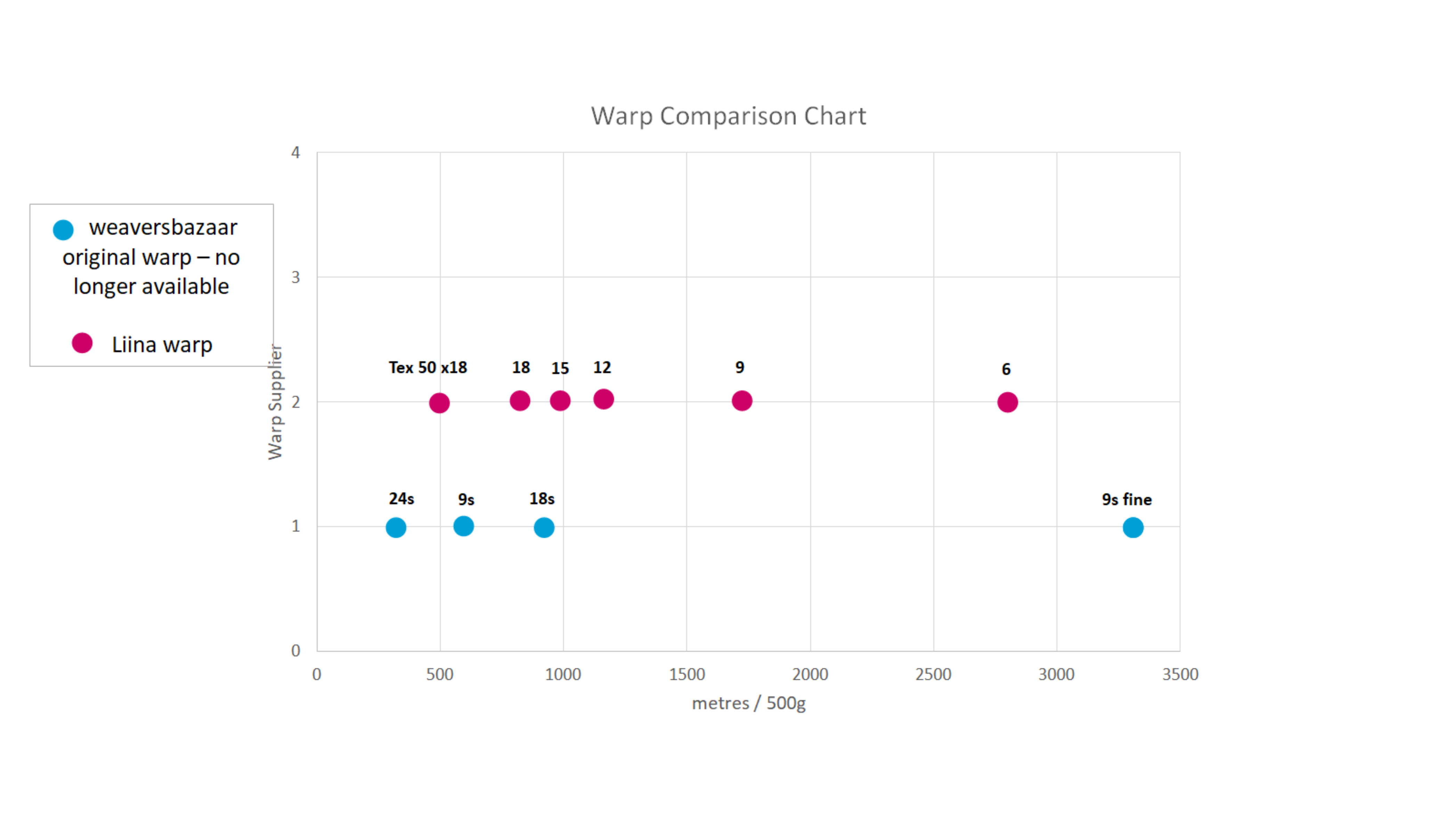Warps
This page has lots of information on the warps we sell and how to select the best one for your project.
Tapestry and rug weaving are traditionally described as 'weft-faced'. This means that the weft yarn, going over and under the fixed warp yarn, is beaten down so firmly that it fully covers the warps. So you might think that the warp thickness does not matter. But the thickness of the warp and it's density influences how complex the shapes within the weaving might become as well as the nature of the finished cloth.
So which warp thickness to use and how many warps to include on the frame/loom?
The answer to this will depend on how big your rug or tapestry is going to be, how much detail you want to weave in terms of shape complexity and how rigid or flexible you want the finished fabric to be. Generally the more detailed the work needs to be the more warps you will need to have to work over. This is called the warp sett and the way this is normally expressed is in ends per cm or inch. Each end corresponds to one warp. The number of ends per cm or inch a warp is suitable for depends on the number of wraps per centimetre or inch. This is the number of times the warp can be wound round something that is a cm or inch long. The tool used to determine this is a yarn sett tool which is available in our online store here. Once the wraps per centimetre or inch is known then the ends per centimetre or inch suitable for that warp is known. The warp width and the space between the warps should be roughly the same so ends per centimetre or inch is often half the number of ends per centimetre or inch, particularly with cloth weaving.
For tapestry and rug weaving the calculation advised by Archie Brennan, the renowned master tapestry weaver, is a very useful one:
- number of wraps per centimetre = number of warps per inch
- number of wraps per half an inch = number of warps per 3 cm.
Finally selcting the right number of weft threads to use in your weft bundle for a particular warp is the last decision. Hopefully, the tables below will tell you what you need to know for our warp range and our weft range but we do stress that it is for guidance only. Choosing to not follow the "rules" can be a design choice as it creates different characteristics in the work.
weaversbazaar Cotton warp
|
9s (fine) |
Liina 6 |
Liina 9 |
Liina 12 |
Liina 15 |
Liina 18 |
Liina Tex 50x18 |
|
|
Length – m /500g |
3300 |
2650 |
1740 |
1280 |
1010 |
840 |
500 |
|
Length – yd / 1.1lbs |
3609 |
2898 |
1903 |
1400 |
1105 |
919 |
547 |
|
Wraps per cm |
13 |
15 |
13 |
10 |
10 |
9 |
6 |
|
Wraps per inch |
36 |
37 |
31 |
28 |
24 |
22 |
14 |
|
Sett - Ends per cm |
6-7 |
7-8 |
6-7 |
5 |
5 |
4 |
3 |
|
Sett - Ends per inch |
18 |
18-19 |
15-16 |
14 |
12 |
8-11 |
7 |
|
Suggestions for no of weft threads with each warp |
|||||||
| Number of Fine (18/2) weft threads to use | 2-3 | 2-3 | 3-4 | 4-7 | 4-7 | 4-7 | 8-12 |
| Number of Medium (9.5/2) weft threads to use | 1-2 | 1-2 | 2-3 | 3-4 | 3-4 | 3-4 | 4-6 |
| Number of Heavy (5/2) weft threads to use | 1 | 1 | 1-2 | 2 | 2 | 2 | 2-3 |
* wraps per centimetre/inch & ends per centimetre/inch - for a further explanation see the Glossary.
To see how our current range of Liina cotton warps compares by thickness and therefore length per 500g spool with our previous own brand warp please use this graph

Download our free tapestry frame warping instructions or view the videos in Learning for Free on how to warp up
